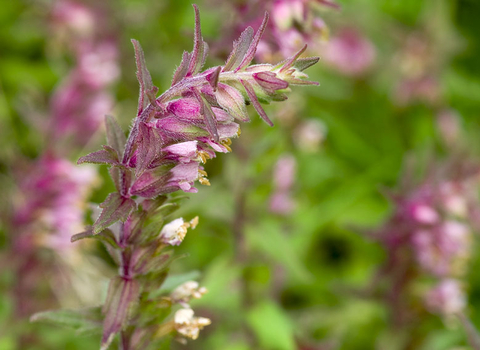
©northeastwildlife.co.uk
Red bartsia
As its name suggests, Red bartsia does have a red tinge to its stem, leaves and small flowers. Look for it on roadside verges, railway cuttings and waste ground in summer.
Enw gwyddonol
Odontites vernaPryd i'w gweld
June to SeptemberSpecies information
Categori
Ystadegau
Height: up to 40cmCommon.
